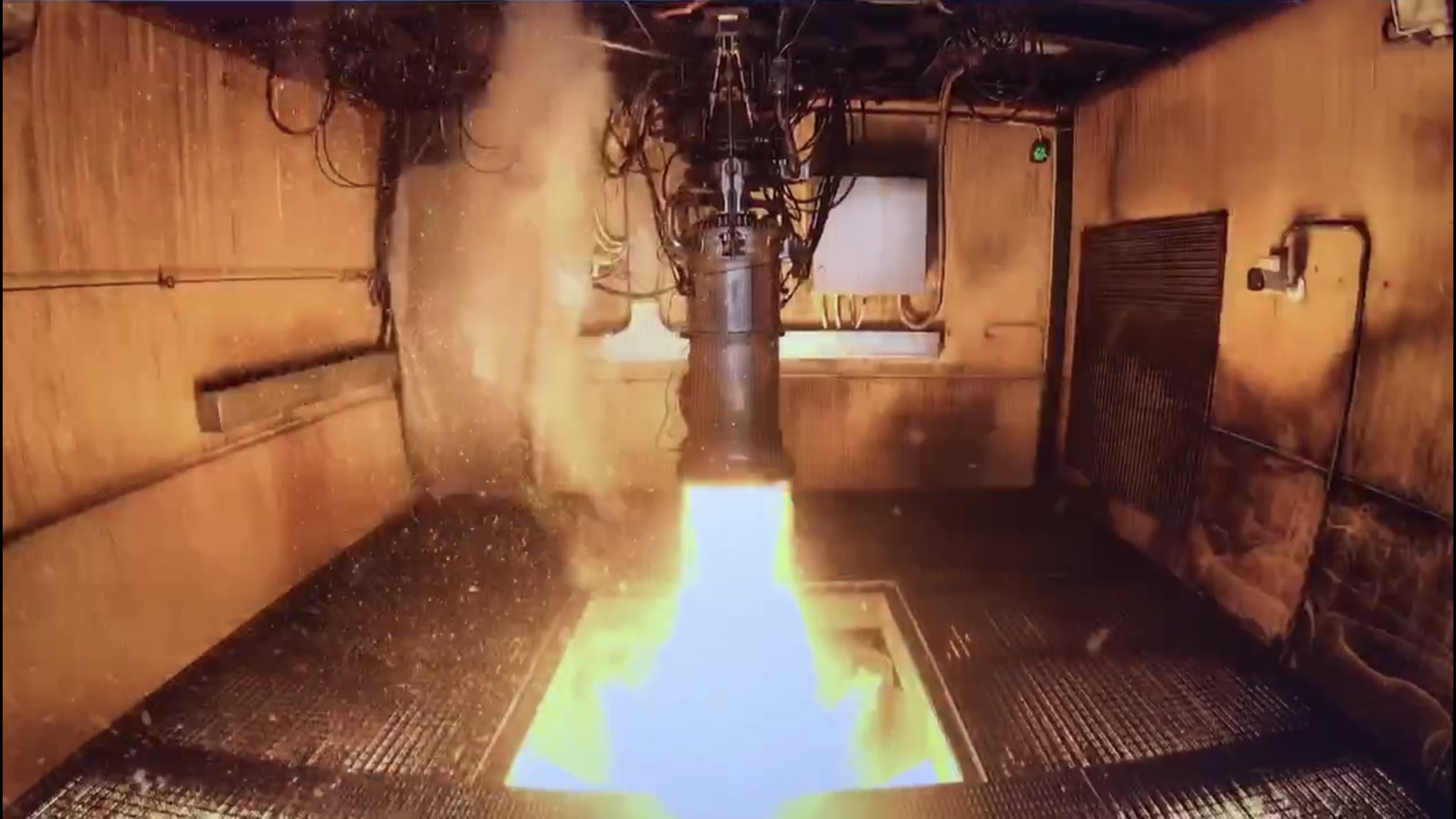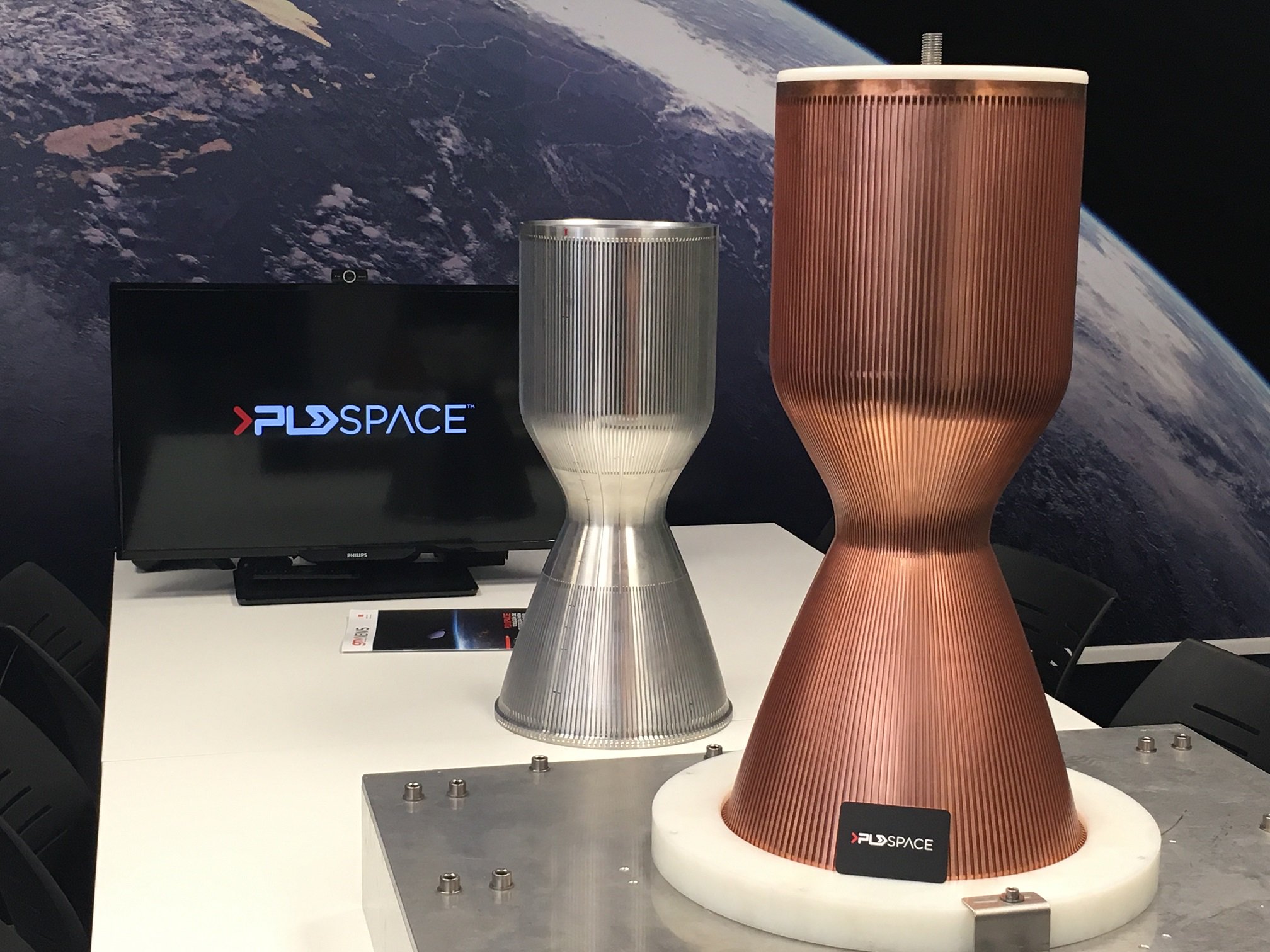TEPREL-1B
TEPREL-1B is a liquid bi-propellant rocket engine developed by PLD Space, a Spanish company working towards a slot in the micro satellite launchers. This engine will be used in MIURA-1 a suborbital vehicle that will be able to carry a 100kg payload to 153km and also serve as a testbed for several technologies. The available specs of the engine are as follows:
- Propellants: Liquid oxigen (LOX) & Rocket grade kerosne (RP1)
- Engine cycle: Pressure-fed (helium as pressurant)
- Thrust (sea level): 30kN
- Burn time: 122 seconds
On top of this, we also know that the vehicle carries 1000l of LOX and 600l of RP1 [1][2]
Extended specs
Lets figure out additional specs of this engine! Most of the equations that I use here come or are derived from Rocket Propulsion Elements [3], an excellent book that goes over the ins and outs of rocket propulsion. Take all these results with a grain of salt, real values may be different from these results.
Mass flow rate
Because we know how much propellants the vehicle carries and the burn duration, we can easily estimate the mass flow rate.
$m_{LOX} = 1000 \cdot 1.141 = 1141 \text{kg}$
Where $1.141$ is the density of LOX.
$m_{RP1} = 600 \cdot 0.820 = 492 \text{kg}$
Where $0.820$ is the density of RP1.
$\dot{m} =\frac{1141 + 492}{122} = \mathbf{13.38 \text{kg/s}}$. This is probably over estimating the actual value, in reality we would need to account for losses due to evaporation of LOX and they probably won’t empty the tanks 100%.
Also, note that the stored oxidiser to fuel ratio is $2.32$, a common value for KEROLOX rocket engines. [4]
Exhaust velocity
By having the rocket thrust and mass flow rate, we can figure out the velocity of the exhaust:
$F = \dot{m} v_{e}$
$v_{e} = \frac{F}{\dot{m}}$
$v_{e} = \frac{30000}{13.38} = 2242.15 \text{m/s}$
Having this we can also figure out the specific impulse (this is at sea level): $I_{SP}=\frac{v_e}{g_0} = \frac{2241.15}{9.81} = 235s$
Chamber pressure
To get the chamber pressure we can start with the exhaust velocity formula:
$v_e = \sqrt{\frac{2k}{k-1} RT_1 \left({1-\left({\frac{p_y}{p_1}}\right)^\frac{k-1}{k}}\right)}$
Where $v_e$ is the exhaust velocity we calculated above. $R$ is the gas constant. $T_1$ temperature at the combustion chamber and $p_y$ the exit pressure (for sea level, it would be 0.101MPa[5]). We can re-arrange the equation to solve for $p_1$:
$\frac{{v_2}^2}{\frac{2k}{k-1}RT_1} = 1 - \left({{\frac{p_y}{p_1}}}\right)^{\frac{k-1}{k}}$
I’ve used WolframAlpha to resolve the equation. We get that $p_1 = \mathbf{1.38\text{MPa}}$
Throat to exit ratio
Lets now figure out the physical size of the rocket engine. We can start by looking and the ratio of expansion:
$\frac{A_t}{A_e} = \left({\frac{k+1}{2}}\right)^\frac{1}{k-1} \left({\frac{p_e}{p_1}}\right)^\frac{1}{k} \sqrt{\frac{k+1}{k-1}\left(1-\left(\frac{p_e}{p_1}\right)^\frac{k-1}{k}\right)}$
$E=\frac{A_t}{A_e}=0.37$
Now, lets get the area at the throat:
$A_t = \frac{\dot{m}}{P_1}\frac{RT_1}{k\left({\frac{2}{k+1}}\right)^{\frac{k+1}{k-1}}} = \mathbf{0.028m^2}$
$A_2 = \frac{A_t}{0.37} = \mathbf{0.075m^2}$
And if we convert this to a diameter we get that $D_t = \mathbf{18.8cm}$ and $D_2 = \mathbf{30.9cm}$
Final stats
And these are the final stats:
- Specific impulse: 235s
- Mass flow rate: 13kg/s
- Exhaust velocity: 2242m/s
- Chamber pressure: 1.38MPa
- Throat diameter: 19cm
- Nozzle exit diameter: 31cm
References
[1] https://www.pldspace.com/es/miura-1
[2] https://www.pldspace.com/es/documentos
[3] http://mae-nas.eng.usu.edu/MAE_5540_Web/propulsion_systems/subpages/Rocket_Propulsion_Elements.pdf
[4] https://en.wikipedia.org/wiki/RP-1
[5] https://en.wikipedia.org/wiki/Atmospheric_pressure#Mean_sea-level_pressure

